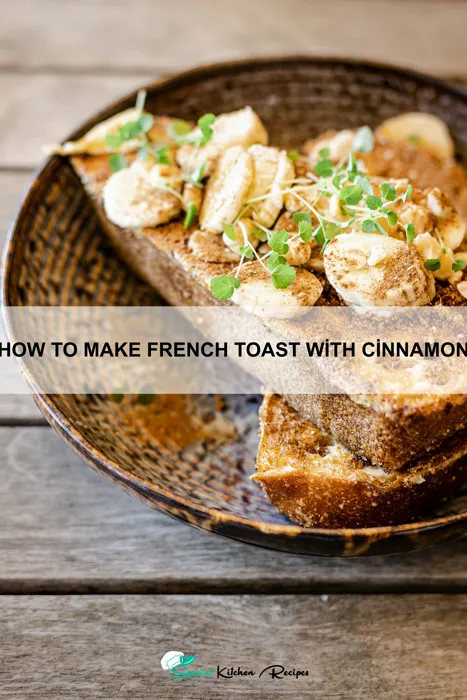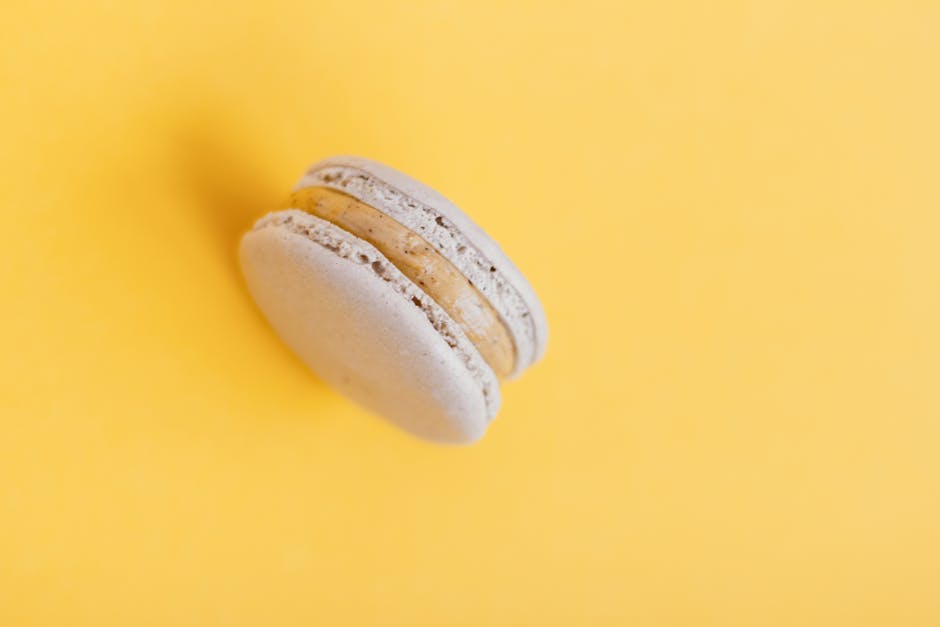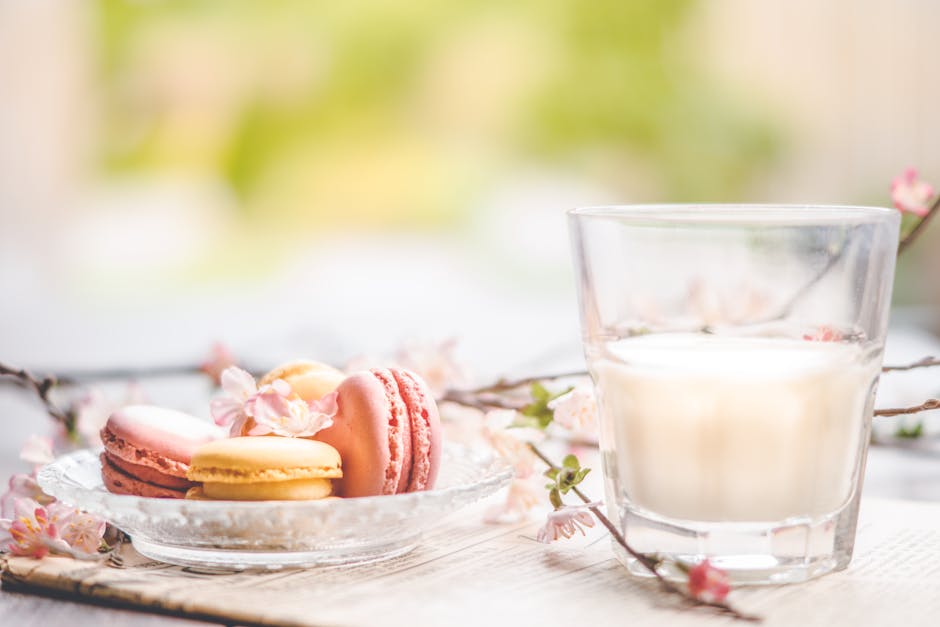French toast, a seemingly simple dish of dipped and pan-fried bread, boasts a surprisingly rich and complex history. While its exact origins remain shrouded in some mystery, many culinary historians trace its roots back centuries, possibly even to ancient Rome, where soaked bread was a common way to utilize stale loaves. However, the dish as we know it—a sweet breakfast treat— likely emerged sometime during the Middle Ages in Europe, evolving from various bread pudding and soaked bread recipes. The name French toast itself is a bit of a misnomer; its popularity wasn’t solely confined to France, and its emergence in English cookbooks predates widespread French influence on American cuisine.
The evolution of French toast is fascinating. Early recipes often featured savory ingredients, reflecting the prevalence of bread as a staple food and the need to minimize waste. Sweet variations, incorporating spices like cinnamon and sugar, began to appear later, particularly in wealthier households. The rise of readily available sugar and spices during the colonial era played a significant role in the sweet French toast’s widespread adoption. In the United States, French toast became a breakfast staple, particularly in the 20th century, fueled by post-war prosperity and the increased availability of readily accessible ingredients. Studies show that French toast remains a popular breakfast option, consistently ranking high in surveys of favorite breakfast foods, often alongside pancakes and waffles.
Beyond its simple preparation, French toast holds a significant cultural place. It’s often associated with comforting home-style cooking and family breakfasts. It’s a versatile dish, easily adaptable to individual preferences with the addition of various fruits, nuts, and syrups. The addition of cinnamon, in particular, adds a warm, inviting aroma and flavor, elevating the dish from simple to special. Cinnamon’s historical significance as a valued spice, traded across continents for centuries, adds another layer of richness to the French toast experience. From its humble beginnings as a way to repurpose stale bread to its current status as a beloved breakfast classic, French toast continues to hold a special place in kitchens and hearts around the world. The simple act of making French toast, particularly with the aromatic warmth of cinnamon, represents a connection to culinary history and the enduring appeal of comfort food.
Ingredients and Measurements
This recipe yields approximately 4 servings of delicious cinnamon French toast. The success of your French toast hinges on using high-quality ingredients, so don’t skimp! Fresh, day-old bread is key – it absorbs the custard better than fresh bread, preventing soggy results. If you only have fresh bread, let it sit out uncovered for a few hours or overnight to slightly dry out.
Bread: You’ll need 6 slices of your favorite bread, about ¾ inch thick. Challah, brioche, or Texas toast are excellent choices due to their richness and ability to hold the custard well. Avoid using overly dense breads like sourdough, as they might become too heavy.
Eggs: Use 4 large eggs. Larger eggs will result in a richer custard. Room temperature eggs emulsify better, leading to a smoother batter, so take them out of the refrigerator at least 30 minutes before starting.
Milk: 1 cup of whole milk is recommended. Whole milk adds richness and creaminess to the French toast. You can substitute with 2% milk, but the texture might be slightly less decadent. Avoid using skim milk, as it will result in a drier French toast.
Cream: For extra richness, add ¼ cup of heavy cream. This is optional, but highly recommended for a truly luxurious French toast experience. If omitting, you can slightly increase the amount of milk.
Sweetener: 2 tablespoons of granulated sugar are sufficient to balance the richness of the bread and milk. You can adjust this to your preference. A touch of vanilla extract (1 teaspoon) will enhance the overall flavor profile.
Cinnamon: 1 tablespoon of ground cinnamon is a great starting point. Don’t be afraid to experiment with the amount of cinnamon to suit your taste. Some people prefer a more pronounced cinnamon flavor, while others prefer a subtler touch.
Optional additions: Consider adding a pinch of salt (about ¼ teaspoon) to enhance the sweetness and balance the flavors. You can also add a dash of nutmeg for an extra layer of warmth and complexity. For a more decadent treat, consider adding a tablespoon of maple syrup to the custard mixture.
Butter: You’ll need approximately 2 tablespoons of butter for cooking. Use unsalted butter for better control over the saltiness of your French toast.
Remember to measure all ingredients accurately for the best results. Using a kitchen scale for precise measurements is highly recommended, especially for the sugar and cinnamon.
Equipment Preparation
Before you begin crafting your delectable cinnamon French toast, ensuring you have the right equipment readily available is crucial for a smooth and efficient cooking process. This section details the necessary tools and their preparation, guaranteeing a positive culinary experience.
First, you’ll need a shallow, wide dish, approximately 9×13 inches or larger, for your custard mixture. This allows for even coating of the bread slices. A smaller dish might lead to overcrowding and uneven soaking.
Next, acquire a non-stick skillet, ideally 8-10 inches in diameter. Non-stick surfaces prevent sticking and ensure easy flipping of the French toast. A well-seasoned cast iron skillet also works wonderfully, providing a beautiful sear. Avoid using a nonstick skillet with metal utensils; opt for wooden or silicone spatulas to maintain the integrity of the coating.
You will also need a whisk for thoroughly combining the custard ingredients. A sturdy whisk ensures proper emulsification, preventing lumps in your custard mixture. A fork can be used in a pinch, but a whisk yields a smoother, more consistent result.
For serving, have plates ready, along with serving utensils such as forks or spoons. Consider having a small bowl for any leftover custard.
Lastly, and perhaps most importantly, ensure you have two sturdy spatulas. One will be used for dipping the bread into the custard, and the other for carefully flipping the French toast in the skillet. Using separate spatulas avoids cross-contamination and guarantees cleaner cooking. Choose spatulas with thin, flexible blades for easy maneuvering under the delicate French toast.
Before you start cooking, preheat your skillet over medium heat. This is essential for achieving the perfect golden-brown color and preventing the French toast from becoming soggy. A medium heat will cook the bread evenly without burning the outside before the inside is cooked through. Avoid high heat, which can lead to burning or uneven cooking. A slightly lower heat may be needed depending on your stovetop and skillet.
By meticulously preparing your equipment as outlined above, you are setting the stage for a flawless and enjoyable French toast-making experience. Investing a few minutes in this crucial step is well worth the effort for the delicious results you will achieve.
Egg Mixture Preparation
Crafting the perfect French toast begins with a well-balanced egg mixture. This mixture will infuse your bread with flavor and provide the ideal texture for a delicious, golden-brown exterior.
For this recipe, we’ll be using a classic egg mixture ratio designed to yield perfectly soaked bread without being overly soggy. Start with 3 large eggs. The size of your eggs can slightly impact the final consistency, so using large eggs ensures consistent results. Crack them into a medium-sized bowl. Avoid cracking the eggs directly into the mixing bowl if it’s cold, as this can lead to uneven cooking.
Next, add 1/2 cup of milk to the bowl. Whole milk is recommended for its richness and creaminess, contributing to a more decadent French toast. However, you can substitute with 2% milk or even buttermilk for a tangier flavor profile. If using buttermilk, you may want to reduce the amount of milk slightly, as buttermilk is naturally thicker.
Now, it’s time to add the spices. For a classic cinnamon French toast, we’ll use 1 teaspoon of ground cinnamon. Feel free to experiment! A pinch of nutmeg or even a dash of vanilla extract can elevate the flavor profile. Add the cinnamon to the bowl and whisk thoroughly. Ensure the cinnamon is evenly distributed throughout the mixture to avoid pockets of concentrated spice.
Once the cinnamon is incorporated, add 1 tablespoon of granulated sugar. This adds a touch of sweetness that balances the richness of the eggs and milk. Adjust the sugar to your liking; some prefer a sweeter French toast, while others prefer a more subtle sweetness. If you prefer a maple-syrup-heavy topping, you might even reduce the sugar slightly.
Finally, whisk the mixture vigorously for at least 30 seconds to ensure all the ingredients are fully combined and create a smooth, homogenous batter. A well-whisked mixture will coat the bread evenly, leading to consistent cooking and a more appealing final product. Set the mixture aside while you prepare your bread slices.
Important Note: Allowing the egg mixture to sit for about 5-10 minutes before soaking the bread can further enhance the flavor infusion, allowing the spices to permeate the mixture better.
Bread Preparation
The success of your French toast hinges significantly on the quality and preparation of your bread. While you can use various types, day-old bread is ideal. Stale bread absorbs the custard mixture better, resulting in a softer, less soggy final product. Fresh bread, on the other hand, tends to become overly saturated and fall apart.
For this recipe, we’ll assume you’re using a standard loaf of sliced bread. Aim for about 6-8 slices, depending on the size of your loaf and your desired portion size. If your bread is significantly fresher than a day old, you can improve its texture by briefly drying it out. You can do this by laying the slices on a baking sheet and leaving them at room temperature for about 30 minutes, or lightly toasting them in a toaster for a few seconds per side. Avoid over-toasting, as this will make the bread too hard.
Thickness matters. Thick-cut bread offers a more substantial and satisfying French toast experience, while thinner slices cook faster and are ideal if you prefer a lighter texture. Experiment to find your preferred thickness. However, slices that are too thin may become overly crisp and dry. A good rule of thumb is to aim for slices approximately ½ to ¾ inch thick.
Once you’ve selected your bread, carefully arrange the slices on a plate or shallow dish. Avoid overcrowding the plate, as this can hinder the even absorption of the custard mixture. Ensure all slices are readily accessible for dipping. If your slices are uneven in size, try to trim them to a consistent size for uniform cooking. This will ensure that all pieces are cooked through at the same time.
Before you begin the dipping process, take a moment to inspect your bread slices. If you notice any particularly hard or dry areas, consider lightly brushing them with a little extra milk or cream to help them absorb the custard mixture more evenly. This small step can significantly improve the overall texture of your French toast.
Finally, remember to keep your bread slices relatively flat. If your slices are too thick or oddly shaped, it’s more difficult to coat them evenly in the custard mixture. This can lead to uneven cooking and some parts of your French toast being undercooked while others are overcooked.
Cooking the French Toast
Now that your French toast batter is prepared and your bread slices are ready, it’s time to cook! This is where the magic happens, so pay close attention to detail for perfectly golden-brown, fluffy French toast.
Heat a large non-stick skillet or griddle over medium heat. Do not overheat the pan; medium heat is crucial for even cooking and preventing burning. A lightly oiled surface is also key. Add about 1 tablespoon of butter or oil to the hot pan. Allow it to melt and coat the surface evenly, swirling the pan to distribute the fat.
Once the pan is hot, carefully dip each slice of bread into the batter, ensuring both sides are fully coated. Don’t over-soak the bread; aim for about 5-7 seconds per side. Over-soaked bread will become soggy and fall apart. Gently place the coated bread slices onto the hot pan, leaving a little space between each slice to allow for even cooking.
Cook for approximately 2-3 minutes per side, or until golden brown and cooked through. Keep an eye on the French toast; cooking times may vary depending on your stovetop and the thickness of your bread. You’ll know it’s ready when the edges are nicely browned and the center is no longer soft and doughy. Use a spatula to gently flip the slices; avoid pressing down too hard, as this can flatten the French toast.
As you cook each batch, remove the finished French toast from the pan and place it on a plate lined with paper towels to absorb any excess oil or butter. This will help keep your French toast crispy and prevent it from becoming greasy. You may need to work in batches, depending on the size of your pan. Don’t overcrowd the pan, as this will lower the temperature and result in uneven cooking.
For perfectly cooked French toast, remember that patience is key. Take your time, and don’t rush the process. Enjoy the aroma of cinnamon and the satisfying sizzle of the bread as it cooks. Once all the slices are cooked, serve immediately and enjoy your delicious, cinnamon-spiced French toast!
Pro Tip: If your French toast is browning too quickly, reduce the heat slightly. If it’s not browning enough, increase the heat slightly. Always adjust based on your stove and the thickness of your bread slices.
Adding Cinnamon (and other spices/sweeteners)
Cinnamon is the star of the show in our cinnamon French toast, but don’t be afraid to experiment with other spices and sweeteners to create your perfect flavor profile. The amount you add will depend on your personal preference and the intensity of the spices you choose. A good starting point is to use a conservative amount and add more to taste.
For a classic cinnamon French toast, we recommend starting with 1-2 teaspoons of ground cinnamon per 4 slices of bread. This provides a warm, comforting flavor without overpowering the other ingredients. You can add the cinnamon directly to the egg mixture, ensuring it’s evenly distributed throughout the batter. Whisk thoroughly to prevent clumping and ensure every bite is infused with cinnamon’s delicious warmth.
If you’re feeling adventurous, consider adding other spices. A pinch of nutmeg (1/4 – 1/2 teaspoon) complements cinnamon beautifully, adding a touch of warmth and complexity. A dash of ground cloves (1/8 – 1/4 teaspoon) can provide a subtle spiciness, but use sparingly as it can be overpowering. Ground allspice (1/4 – 1/2 teaspoon) offers a similar warmth to cinnamon but with a slightly different flavor profile. Remember to always start with smaller amounts and gradually increase to your liking.
Sweeteners can enhance the flavor and richness of your French toast. A simple addition of 1-2 tablespoons of granulated sugar to the egg mixture adds a subtle sweetness that balances the spices. For a richer flavor, consider using 1-2 tablespoons of brown sugar, which imparts a deeper caramel-like note. Alternatively, you can drizzle a little maple syrup (1-2 tablespoons) over the cooked French toast, providing a more intense sweetness and a beautiful glossy finish. Honey also works well, adding a unique floral sweetness.
Important Note: When adding sweeteners, keep in mind the sweetness of your bread. Brioche or challah are naturally sweeter than white bread, so you might need less added sugar. Also, taste the batter before cooking – this allows you to adjust the sweetness and spice levels to your preference. Don’t be afraid to experiment and find the perfect balance of flavors that suits your palate!
Professional Tip: For an even more intense cinnamon flavor, consider using cinnamon sticks. Add a cinnamon stick to the egg mixture while it sits, then remove it before cooking. This infuses the batter with a more pronounced cinnamon aroma and flavor.
Recommendations for the Perfect Cinnamon French Toast
For the ultimate cinnamon French toast experience, consider these recommendations. Start with high-quality ingredients: day-old bread is ideal for absorbing the custard mixture without becoming soggy, and using real vanilla extract and cinnamon will significantly enhance the flavor profile. Experiment with different types of bread; brioche or challah offer a richer, more decadent result. Don’t overcrowd the pan when cooking; this ensures even browning and prevents steaming. Cook over medium heat for optimal results, adjusting the heat as needed to prevent burning.
Serving suggestions abound! A classic pairing is maple syrup, but consider exploring other options. A dollop of whipped cream or a sprinkle of powdered sugar adds a touch of elegance. Fresh berries (strawberries, blueberries, raspberries) provide a delightful contrast in texture and flavor. A drizzle of honey or a sprinkle of chopped nuts (pecans, walnuts) adds further complexity. For a truly special occasion, try a fruit compote or a caramel sauce.
Leftover French toast can be stored in an airtight container in the refrigerator for up to 2 days. Reheat gently in a toaster or microwave to avoid drying it out. Avoid freezing French toast as it tends to become soggy upon thawing.
Complementary dishes to consider include crispy bacon or sausage for a hearty breakfast, or a side of fresh fruit salad for a lighter option. Scrambled eggs or a simple green salad also make excellent accompaniments. The sweetness of the French toast pairs well with both savory and sweet side dishes, allowing for endless customization.
Nutritional Information (per serving, approximate values will vary based on ingredients and portion size): Calories: 300-400; Protein: 8-10g; Fat: 15-20g; Carbohydrates: 40-50g; Fiber: 2-3g. Note: This information is an estimate and may vary depending on the specific ingredients used and portion size. For accurate nutritional information, use a nutrition calculator with your specific recipe details.





